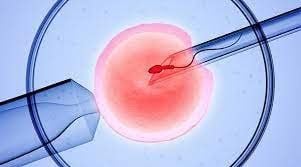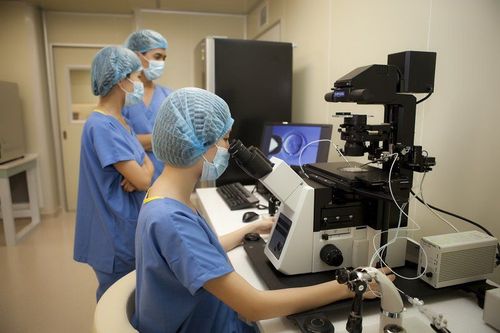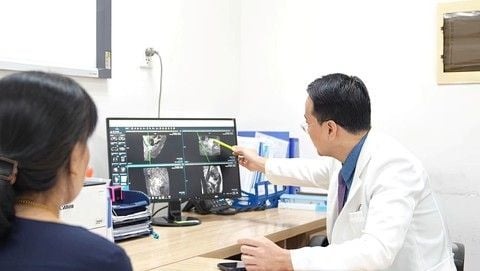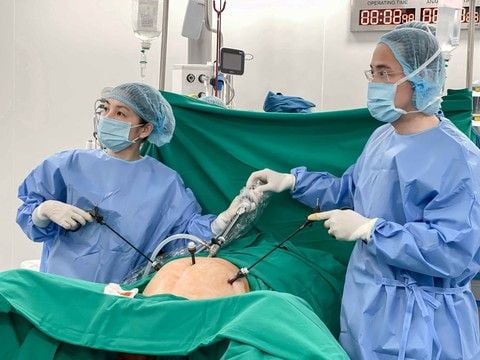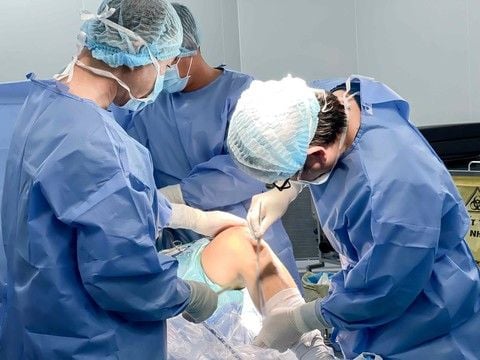The article is professionally reviewed by Nguyen Thi Man, Specialist Level I in Obstetrics and Gynecology, at Vinmec Da Nang International General Hospital. Doctor Man has over 10 years of experience in diagnosing, consulting, and treating in the field of Obstetrics and Gynecology.
Women can still conceive normally even after the removal of one fallopian tube, provided both ovaries remain intact.
1. When do women need to have 1 fallopian tube removed?
The fallopian tubes, or oviducts, are part of the female reproductive system. They have a relatively complex structure consisting of multiple connected segments. The inner diameter of the fallopian tubes is quite narrow, so any damage can affect their function. Statistics show that up to one-third of female infertility cases are related to various issues with the fallopian tubes. Below are some reasons why women may need to have one fallopian tube removed:
1.1. Ectopic pregnancy
Ectopic pregnancy occurs when a fertilized egg implants itself in the fallopian tube instead of attaching to the uterine wall for normal development. As the ectopic pregnancy progresses to a size that exceeds the fallopian tube's capacity, it can cause severe pain and pressure. Without timely medical intervention, the pregnancy mass may rupture, leading to significant damage to the fallopian tube and resulting in the need to remove one tube.
If an ectopic pregnancy is detected and treated early, women may preserve their fallopian tubes by using medication rather than undergoing surgical removal of the tube.

1.2. Hydrosalpinx
Hydrosalpinx typically involves inflammatory fluid caused by a blockage in the fallopian tube. If the damage to the fallopian tube is mild, laparoscopic surgery may restore its patency. However, in cases of severe damage, only partial removal of the fluid is possible during surgery, and the tube cannot be completely unblocked. In such situations, the chances of natural conception and success with in vitro fertilization (IVF) are generally low. Therefore, women with hydrosalpinx are often advised to undergo surgery to remove the damaged fallopian tube before proceeding with In vitro fertilization to improve the likelihood of pregnancy.
1.3. Pelvic Inflammatory Disease or Inflammation of Both Fallopian Tubes
Severe infections caused by Chlamydia bacteria are also a common reason why women may need to have one fallopian tube removed. In some cases, women are required to undergo fallopian tube removal due to repeated abortions, which can lead to complications such as pelvic inflammatory disease.
2. What are the effects of removing one fallopian tube?
2.1. Impact on fertility
In cases where one fallopian tube has been removed but the remaining tube is still functioning normally, a woman can still conceive naturally. Ovulation alternates between the two ovaries each month.
Theoretically, a woman's natural fertility may slightly decrease after the removal of one fallopian tube compared to women with both tubes intact. However, in reality, many women can conceive naturally within the first year following the surgery. Therefore, removing one fallopian tube does not significantly impact fertility. For women hoping to conceive, it is important to maintain a positive mindset, ensure proper nutritional intake, manage a healthy weight, and adopt a scientific lifestyle and healthy habits.
In rarer cases, where both fallopian tubes are removed, pregnancy is still possible but generally requires assisted reproductive methods such as in vitro fertilization (IVF). With IVF, the sperm and egg don’t need to meet inside the fallopian tubes, allowing the woman to achieve pregnancy. However, couples should be patient and mentally prepared, as not every IVF attempt is successful on the first try.
2.2. Impact on sexual activity

Sex hormones, which are primarily produced by the pituitary gland and ovaries, play a key role in influencing a woman's sexual activity. Therefore, when one fallopian tube is removed, the ovaries and pituitary gland can still function normally. In other words, sexual desire and satisfaction during intercourse are not affected.
As a result, women who have undergone the removal of one fallopian tube will not experience changes in their sexual activity. However, after the surgery, women need to wait approximately 4 to 6 weeks before resuming normal sexual activity, this is the average time required for the surgical wounds to heal.
In summary, with advancements in medicine, reproductive system deficiencies caused by the removal of one fallopian tube are no longer as significant a concern as they once were.
To arrange an appointment, please call HOTLINE or make your reservation directly HERE. You may also download the MyVinmec app to schedule appointments faster and manage your reservations more conveniently.
To arrange an appointment, please call HOTLINE or make your reservation directly HERE. You may also download the MyVinmec app to schedule appointments faster and manage your reservations more conveniently.

